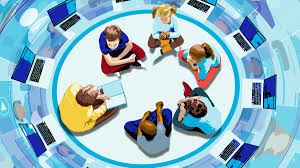Using Technology to Enhance Teaching and Learning in the Classroom
- September 19, 2024
Technology has revolutionized every aspect of our lives, and education is no exception. In today's digital age, integrating technology into the classroom has become essential for enhancing teaching effectiveness, engaging students, and preparing them for a technology-driven world. This blog explores the myriad ways in which technology can be used to enhance teaching and learning experiences, offering practical strategies and examples for educators.
The Role of Technology in Education
Technology serves as a powerful tool that supports and enhances traditional teaching methods by:
- Increasing Access to Information: Technology provides instant access to vast amounts of information and resources, allowing students to explore topics beyond the confines of textbooks.
- Promoting Active Learning: Interactive educational apps, simulations, and multimedia content engage students actively in the learning process, fostering curiosity and deeper understanding.
- Personalizing Learning Experiences: Adaptive learning platforms and personalized digital content cater to individual learning styles and pace, ensuring that each student's needs are met.
- Facilitating Collaboration: Digital tools such as online forums, collaborative documents, and video conferencing enable students to collaborate with peers locally and globally, promoting teamwork and communication skills.
Practical Applications of Technology in the Classroom
- Interactive Whiteboards and Projectors: Interactive whiteboards and projectors facilitate dynamic presentations, interactive lessons, and real-time annotation of content.
- Educational Apps and Software: Apps and software tailored to specific subjects (e.g., math, language arts) provide interactive exercises, quizzes, and tutorials that reinforce learning objectives.
- Digital Learning Platforms: Learning management systems (LMS) streamline course administration, deliver online assignments, and provide access to educational resources and multimedia content.
- Virtual Reality (VR) and Augmented Reality (AR): Immersive technologies like VR and AR create virtual environments and simulations that enhance experiential learning in subjects like history, science, and vocational training.
- Flipped Classroom Model: In a flipped classroom, students learn content online through videos and interactive modules at home, freeing up class time for collaborative activities, discussions, and personalized guidance from teachers.
Benefits of Using Technology in Education
- Enhanced Engagement: Multimedia content, interactive simulations, and gamified learning experiences capture students' attention and motivation, making learning more enjoyable and effective.
- Improved Collaboration: Digital tools facilitate peer collaboration, project-based learning, and global connections, preparing students for collaborative work environments.
- Data-Driven Insights: Analytics from digital platforms provide educators with actionable insights into student progress, allowing for timely interventions and personalized support.
- Preparation for Future Careers: Familiarity with technology in education equips students with digital literacy skills and prepares them for careers in fields that increasingly rely on technology.
Overcoming Challenges and Considerations
- Digital Equity: Addressing disparities in access to technology and reliable internet connectivity among students and schools.
- Teacher Training: Providing ongoing professional development and support to educators to effectively integrate technology into their teaching practices.
- Privacy and Security: Ensuring the safe and responsible use of student data and protecting privacy rights in the digital learning environment.
In conclusion, technology has the potential to transform education by enhancing teaching practices, engaging students, and preparing them for success in a rapidly evolving world. By embracing innovative tools and strategies, educators can create dynamic learning environments that foster creativity, critical thinking, and collaboration among students. Let's harness the power of technology to unlock new possibilities in education and empower the next generation of learners to thrive in the digital age.

